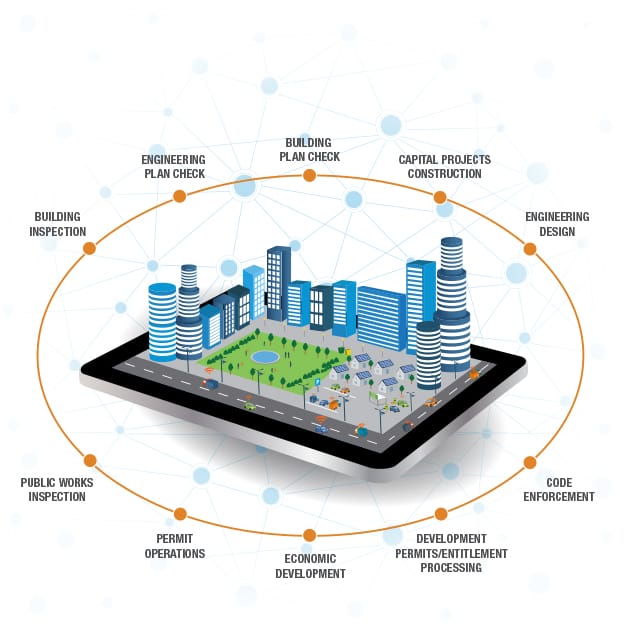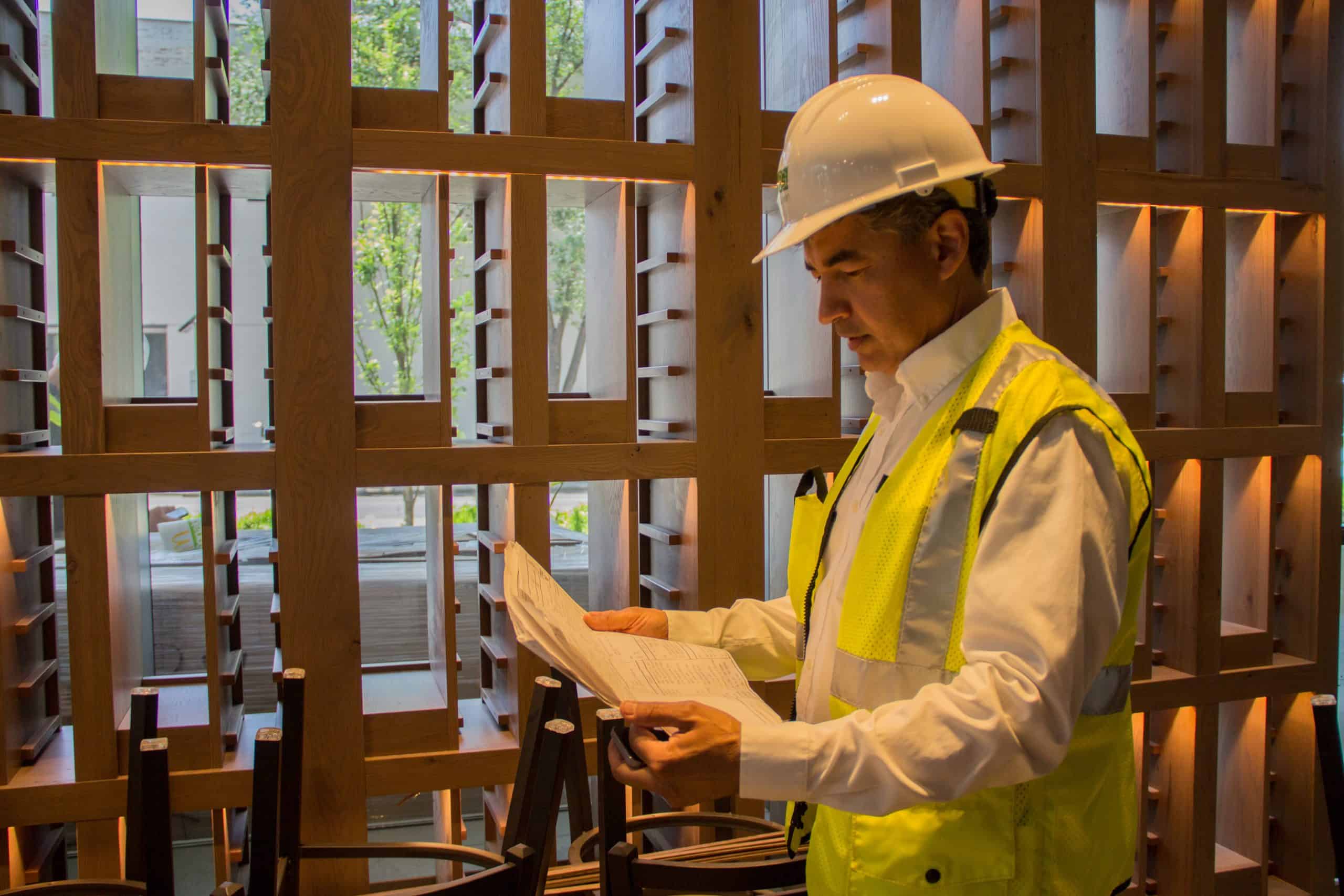
5 Ways Virtual Counter Services Strengthen Project Delivery

Cities and county agencies with shrinking budgets and staff sizes have been in search of new solutions to manage workflow and increase productivity when overseeing capital projects and development review services. This ongoing challenge was only exacerbated by COVID-19-driven lockdowns in 2020. In order to avoid shutting down critical services, many agencies discovered the necessity of contactless counter and project delivery services.
Contactless counters can implement a range of digital solutions to manage project workflows. These solutions range from around-the-clock self-service permit and plan check capabilities to virtual inspections and online payment collection, and can provide municipalities with a host of benefits—if deployed appropriately.
Agencies were pushed to deploy a wide range of technology solutions to cope with closed public counters and off-site project development oversight during COVID-19. Many applied a cobbled-together approach, accepting permits via email, using drones and smartphones to gather inspection data, and taking payments over the phone.
However, this approach limits agencies in their ability to scale up digital benefits over time. With these lessons in hand and new expectations in mind from customers accustomed to convenient remote services, now is the time to take a more strategic approach to this virtual city hall model. By deploying integrated solutions, agencies can better collaborate with partners, more efficiently move accurate documents forward, and develop more resilient project delivery services for their clients. This resiliency will be critical in protecting revenue streams and economic development in the event of future disruptions.
Benefits of an Integrated Contactless counter
A successful contactless counter will ultimately provide integrated digital solutions for any service that can be done at the public counter. These include permitting, plan checking, inspection, and services necessary for the agency’s economic survival, such as collecting fees and taxes. While shifting these to online services can offer tremendous efficiencies, agencies can maximize benefits by applying an integrated IT approach that uses customized web-based portals to support a range of connected activities. Below are just a few examples of the benefits this approach can provide.
- Reduced risk of error. Applications or payments made directly into a web-based portal are less prone to errors. Yet more than 40% of surveyed agencies admit to taking applications via mail, and approximately 35% to taking payments via mail and/or phone. Even simple keystroke errors waste time for staff who must work to track down discrepancies. These delays and lost payments all translate to added costs for customers. When payment software interfaces directly with your agency’s finance software, agencies save even more by eliminating daily or weekly reconciliations.
- Faster processes. Customer portals that allow customers to submit applications, plans, and documents and make payments when it’s convenient to them can actually encourage the submission of more complete applications. Without the need for follow-up questions, processes become more streamlined. What’s more, review processes can begin right away.
Applications and payments made directly into the software also require much less staff time than applications submitted via email or regular mail. Over the course of hundreds of permit applications, this can greatly reduce permit and accounting staff hours required to input application information. Portals that allow customers to check their own permit and plan check status, look up reference documents and plans, etc., also consume less staff time.
- More collaborative projects. The use of digital tools greatly enhances collaboration between agencies and developers and among different reviewing departments. When information is integrated online, development managers can more easily track critical projects and respond with real-time knowledge of project status.
- Higher staff engagement. Digitizing these processes helps shift staff away from monotonous key-entering and paper shuffling to more value-added tasks. This not only lowers the risk of errors but has the added benefit of boosting employee engagement.
- Meeting customer expectations. Consumers have come to expect the convenience of around-the-clock access to a wide range of services, from booking flights to shopping for groceries. Government has not kept pace. With more customer-centric access portals, agencies can build stronger relationships with partners and customers and expedite payment processes.
Hurdles to a Successful Contactless Counter
Implementing these virtual services carry many benefits, but it’s not always easily achieved. One challenge that many agencies may have to overcome is shifting away from a reactive solution to a more strategic, big-picture approach to creating contactless services. Becoming more strategic in this endeavor means moving away from pieced-together solutions that address a range of needs without interacting with one another. This approach is not typically scalable over time and can in fact lead to communication challenges across departments and with customers.
By implementing integrated software solutions, agencies gain the benefits of automation that supports well thought-out workflows, efficient service delivery, and a strong experience for all platform users.
Another challenge can arise in the form of staff resistance to change. Resistance can stem from a fear of job loss to technology or an unwillingness to try new ways of doing things. Either way, a strategic approach to digital solutions must take into account staff buy-in. By addressing concerns upfront, explaining how automated solutions can support staff in their shift from the monotonous to more value-oriented tasks, and encouraging project champions to celebrate implementation progress, then these projects have a stronger chance of success.
While COVID-19 shutdowns may be less of a threat, municipal agencies well know that disruptions to seamless service are always possible. Fortunately, the growth in digital experiences has taught us all that we can remain connected to one another and to critical projects with the right tools in place.
For more information, read the full whitepaper The Virtual City Hall: Contactless Counter and Project Delivery Services.
If you’re ready to take a more strategic approach to your virtual operations, HR Green can help. Our municipal operations experience, combined with systems knowledge, have supported operational reviews and software integration for client agencies and streamlined the approval of public and private development projects. For more information, contact us today.
Subscribe to HR Green Insights
We're dedicated to providing up-to-date knowledge and insights about the topics that matter most to you. We know how busy you are, so we will keep this simple, covering just one topic per email. Once you've subscribed, you can easily customize your preferences to receive only the updates relevant to you.





